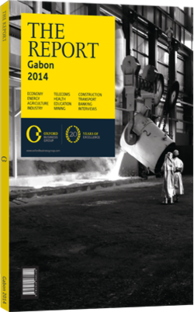OBG talks to Désiré Guedon, Minister of Energy and Water Resources

Interview: Désiré Guedon
What are the main obstacles to improving electricity and water production?
DÉSIRÉ GUEDON: The current network has been structurally deficit for the last 15 years. The supply of electricity and water should reflect demand, urban development and the need to diversify energy sources. In this regard, the government aims to change the current situation by reinforcing the investment in order to develop the sector. Gabon has a clear vision and development strategy for its water and electricity sectors included in the Emerging Gabon strategic plan.
We are now experiencing new constraints. We have had to move away from traditional public service to a more effective management policy. The Ministry of Energy and Water Resources (Ministère de l’Energie et des Ressources Hydrauliques, MERH) will not only be in charge of designing and consolidating public policy on energy and water, but evaluating its results too. With new guidelines on how to tackle these structural issues, we have created entities with specific missions, including: the Société du Patrimoine, in charge of managing the government’s assets in the sector; the Agence de Régulation du Secteur de l’Eau potable et de l’Energie Electrique; the Conseil National de l’Eau et de l’ Electricité; and the Société de Production et de Transport d’Électricité du Gabon. Technical and financial factors constrain our capacity to increase supply. Gabon often relies on international partnerships to carry out projects. These projects also need support from commercial banks, investment funds or multilateral financial institutions. Having learned from the past, Gabon’s energy sector is ready to welcome international investors with a new regulatory framework.
What are the main challenges to increasing hydropower’s contribution to the energy supply?
GUEDON: The challenges we face in this area include the need to draft a comprehensive map of all underground hydraulic resources; a water policy supported by an appropriate regulatory framework, which takes into account regional water policies; and a restructuring of water operators under the MERH’s leadership.
What are the government’s priorities in terms of increasing the electrification rates in rural areas?
GUEDON: The current electrification rate for the country as whole is 75%. However, this figure hides enormous disparities between rural and urban areas. In rural areas electrification remains around 35%, whereas it is about 80% in urban areas. By 2020, the government expects to achieve 100% coverage throughout the country and has made this a priority.
Many projects have been proposed: the Alenakiri gas-power station, which is already in use (70 MW); the hydroelectric Grand Poubara plant (160 MW); the Chutes de l’Impératrice hydroelectric plant (84 MW); the Fell project (36 MW); and the Port-Gentil gas project (52 MW), among others. Feasibility studies for the construction of hydroelectric dams at Ngoulemendjim (115 MW) and Dibwangui (10 MW) are also under way.
The electrification rate will also be considerably improved thanks to new initiatives, such as increasing connections within current networks, which will allow for the electrification of villages along major roads, the development of decentralised production and projects aimed at improving access to basic services in rural areas in cooperation with the World Bank.
How can the tariff system be utilised in order to ensure the profitability of energy infrastructure?
GUEDON: Energy pricing was revised just before the privatisation of the Société d’Energie et d’Eau du Gabon. For low-voltage power, the main guidelines for the new system entail equalising prices at the national level according to whether subscribers are in a region that derives power from hydroelectric or thermal sources. In relation to medium-voltage power, prices have been set according to energy production costs. However, the government has not ruled out the possibility of further revisions to improve the pricing framework.
You have reached the limit of premium articles you can view for free.
Choose from the options below to purchase print or digital editions of our Reports. You can also purchase a website subscription giving you unlimited access to all of our Reports online for 12 months.
If you have already purchased this Report or have a website subscription, please login to continue.

